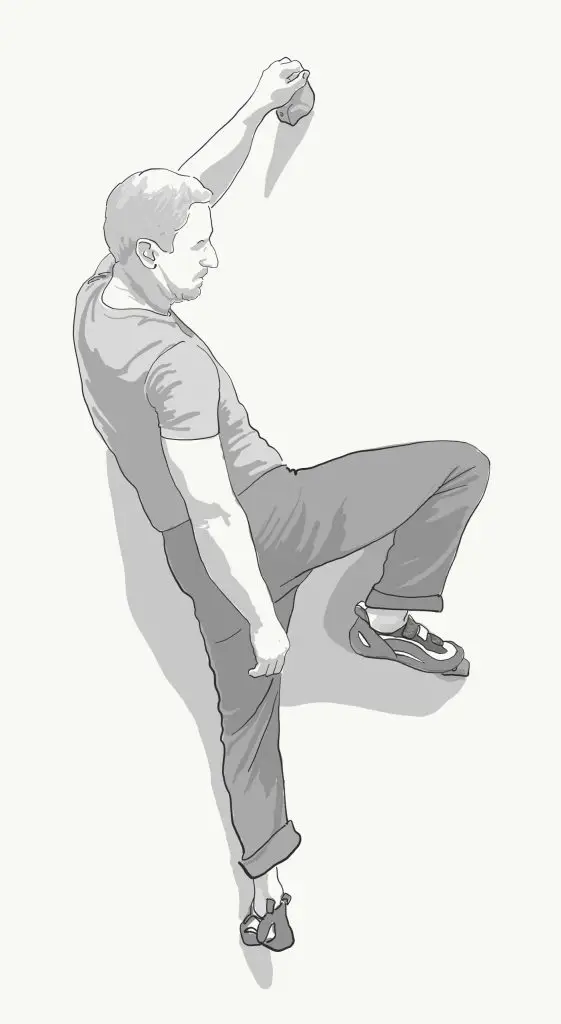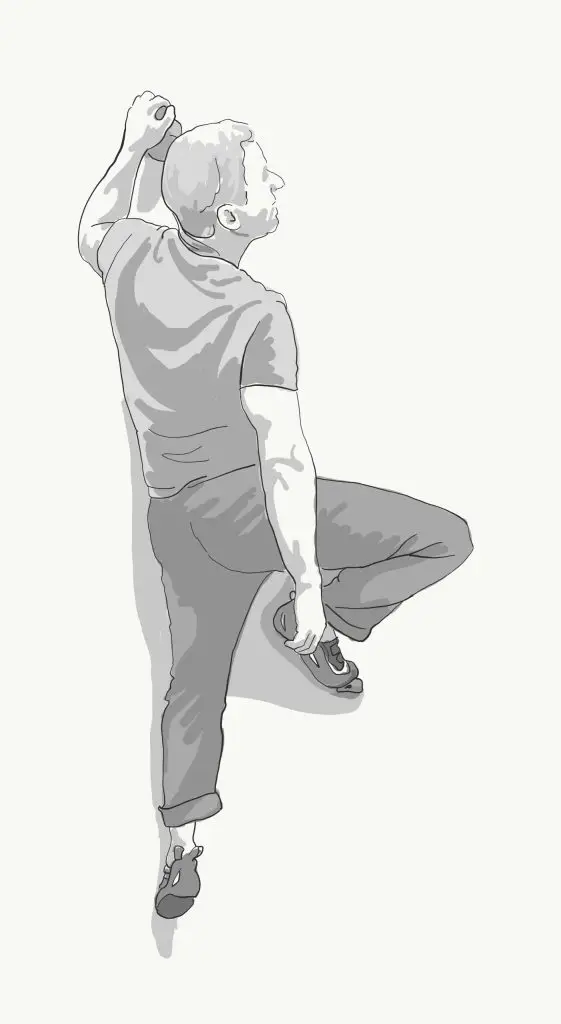Why Do You Need a High Step?
High steps become more and more common as slab and vertical moves get harder. A high step is difficult to precisely define. In general, it is a foothold for your higher foot that is placed above where a climber can simply “shift and sit” on their heel.
For most climbers, this would be a foothold that is placed between mid-thigh and waist level, as compared to their lower foot.
High steps frequently require dynamic weight shifting, where the climber must push off the lower foot to “hop” onto the higher foot.
When performing a high step, climbers should avoid as much as possible pulling up with their arms. This results in wasted energy from over-gripping.
What is a Mantle?
A mantle is an extreme form of a high step. This is where the target hold to stand on is at waist level or higher, and the only handhold is the one you plan to stand on. Or, less frequently, a hold very close to that one.
The difficulty of a mantle is proportional to the width of the hold. A wide shelf is much easier to mantle than a crimp rail! Mantles may also be challenging whether or not there are footholds leading up to them.


How Do You Mantle?
The classic mantle is a skill very similar to getting out of a pool.
You move up into a position where you can change from pulling down on the hold to pushing down on it. Straighten your arm (or arms) and get one foot on the shelf level with your hands. (This is also sometimes called a hand-foot match).
Once the foot is up and the arms fully pressed out, then the procedure is to rock over the foot (just like any other move) and push into a standing position with your leg.
Remember, as with normal high steps, mantles typically require dynamic weight shifting. You need this to boost your hips up and over the shelf to complete the move.
And that’s it! Now you know all about high steps and mantles. Want to learn more advanced dynamic techniques? Let’s start with dynos. Learn all about them here. Happy climbing!
All material is reprinted with the permission of the author. Copyright 2022 David H. Rowland. All rights reserved.




